Growing Potatoes in Containers: Imagine harvesting a bounty of fresh, homegrown potatoes right from your patio or balcony! No sprawling garden needed. Sounds too good to be true? It’s not! For centuries, potatoes have been a staple food source, cultivated across diverse cultures from the Andes Mountains to the Irish countryside. Their versatility and nutritional value have made them a beloved crop worldwide.
But what if you lack the space for a traditional potato patch? That’s where the magic of container gardening comes in. I’m here to show you how incredibly easy and rewarding it is to grow your own spuds in pots, even if you’re a complete beginner. Forget back-breaking digging and weeding; this DIY guide will walk you through every step, from choosing the right container to harvesting your delicious, homegrown potatoes.
In today’s fast-paced world, knowing where your food comes from is more important than ever. Growing Potatoes in Containers offers a simple, sustainable way to connect with nature, enjoy fresh produce, and impress your friends and family with your green thumb. Plus, who can resist the satisfaction of digging up their own treasure trove of potatoes? Let’s get started!
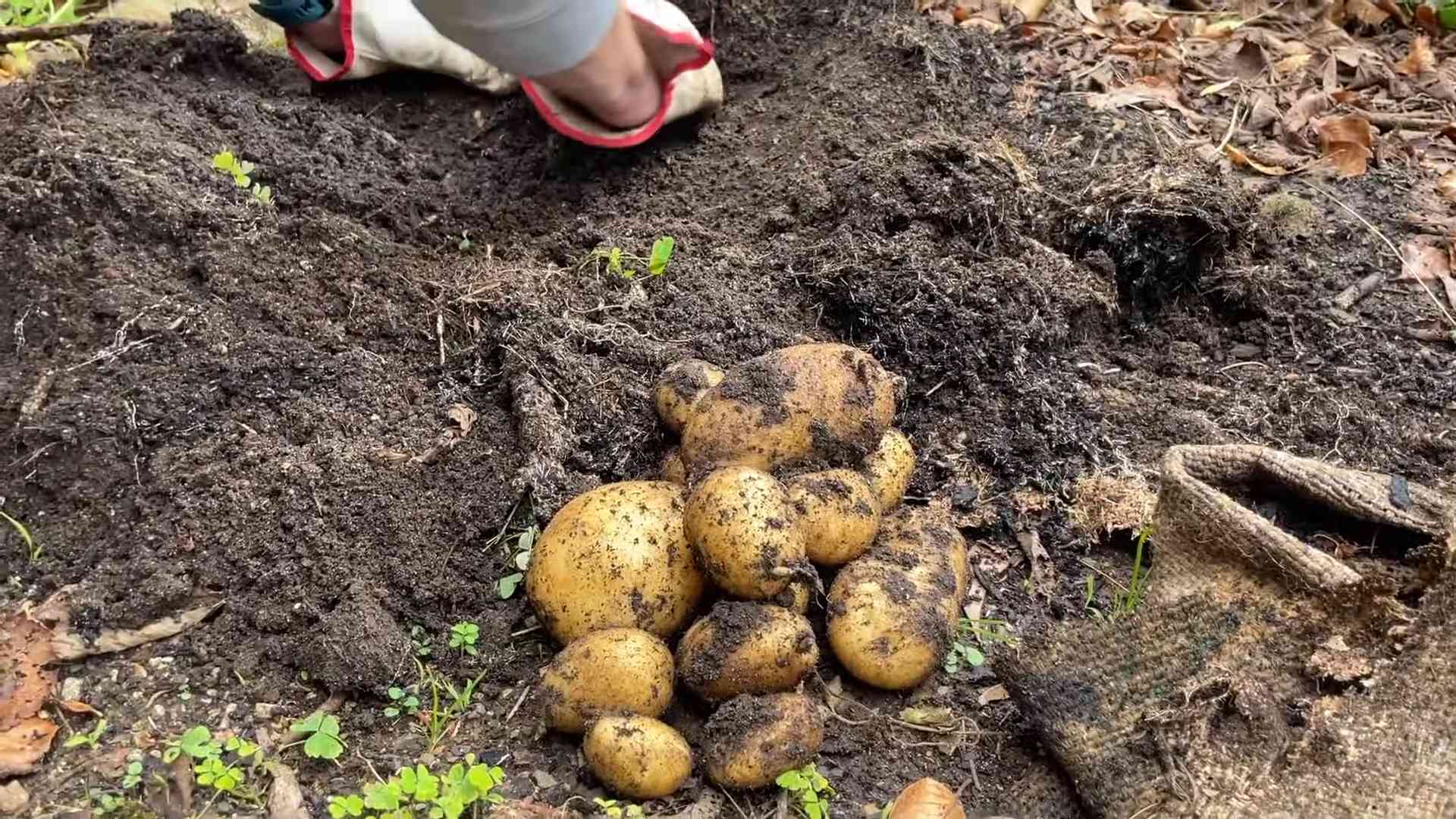
Growing Potatoes in Containers: A Bountiful Harvest on Your Patio!
Hey there, fellow gardening enthusiasts! I’m so excited to share one of my favorite DIY gardening projects with you: growing potatoes in containers. It’s surprisingly easy, super rewarding, and perfect if you’re short on space or just want to try something new. Forget digging up a whole garden bed – with this method, you can have a potato harvest right on your patio or balcony!
Why Grow Potatoes in Containers?
Before we dive in, let me tell you why I’m such a fan of container potato growing:
* Space-Saving: Ideal for small gardens, balconies, or patios.
* Easy Harvesting: No more back-breaking digging! Just tip the container and collect your spuds.
* Pest Control: Easier to monitor and manage pests compared to in-ground planting.
* Soil Control: You can create the perfect soil mix for optimal potato growth.
* Fun and Educational: A great project for kids and adults alike!
What You’ll Need
Okay, let’s gather our supplies. Here’s what you’ll need to get started:
* Container: A large container is key. I recommend something at least 20 gallons in size. Think large plastic bins, trash cans (with drainage holes!), grow bags, or even old tires stacked on top of each other. The taller the better, as you’ll be “hilling” the potatoes as they grow.
* Seed Potatoes: These aren’t seeds, but rather small potatoes specifically grown for planting. You can find them at your local garden center or online. Choose a variety you love to eat! I personally love Yukon Gold for their creamy texture.
* Potting Mix: A well-draining potting mix is crucial. Avoid using garden soil, as it can compact and hinder drainage. I like to use a mix of compost, peat moss (or coco coir), and perlite.
* Fertilizer: A balanced fertilizer (like 10-10-10) or a fertilizer specifically formulated for potatoes will help your plants thrive.
* Watering Can or Hose: For regular watering.
* Trowel or Shovel: For planting and adding soil.
* Optional: Potato fertilizer spikes, mulch (straw or wood chips).
Step-by-Step Guide: Planting Your Potatoes
Alright, let’s get our hands dirty! Here’s how to plant your seed potatoes:
1. Prepare Your Seed Potatoes: A week or two before planting, “chit” your seed potatoes. This means encouraging them to sprout. Place them in a cool, bright location (but not direct sunlight) until they develop small, green sprouts (called “eyes”). If your seed potatoes are large, you can cut them into smaller pieces, ensuring each piece has at least 2-3 eyes. Let the cut pieces dry for a day or two to prevent rotting.
2. Prepare Your Container: Make sure your container has adequate drainage holes. If not, drill some! Then, add about 4-6 inches of your potting mix to the bottom of the container.
3. Plant Your Seed Potatoes: Place your seed potatoes (or potato pieces) on top of the soil, with the sprouts facing upwards. Space them evenly if you’re planting multiple potatoes in one container. I usually plant 2-3 seed potatoes in a 20-gallon container.
4. Cover with Soil: Cover the seed potatoes with another 4-6 inches of potting mix. Gently water the soil until it’s moist but not soggy.
5. Wait for Sprouts: Now comes the waiting game! Place your container in a sunny location. Potatoes need at least 6-8 hours of sunlight per day. Keep the soil consistently moist, but avoid overwatering. You should see sprouts emerging from the soil in about 2-3 weeks.
Hilling Your Potatoes: The Secret to a Big Harvest
This is where the magic happens! “Hilling” is the process of adding more soil to the container as the potato plants grow. This encourages the plants to produce more potatoes along the buried stem.
1. First Hilling: When the potato plants are about 6-8 inches tall, add more potting mix to the container, burying the stems up to the bottom set of leaves. Leave the top leaves exposed.
2. Repeat Hilling: Continue hilling every 2-3 weeks as the plants grow taller. Each time, add enough soil to bury the stems up to the bottom set of leaves. You’ll eventually fill the container almost to the top.
3. Watering and Fertilizing: Keep the soil consistently moist throughout the growing season. Water deeply whenever the top inch of soil feels dry. Fertilize your potato plants every 2-3 weeks with a balanced fertilizer or a potato-specific fertilizer, following the instructions on the package.
Caring for Your Potato Plants
Here are a few extra tips to keep your potato plants happy and healthy:
* Sunlight: Ensure your plants get at least 6-8 hours of sunlight per day.
* Watering: Water deeply and regularly, especially during hot, dry weather.
* Fertilizing: Feed your plants regularly with a balanced fertilizer.
* Pest Control: Keep an eye out for pests like aphids, potato beetles, and flea beetles. Handpick them off the plants or use an organic insecticide if necessary.
* Disease Prevention: Avoid overwatering, as this can lead to fungal diseases. Ensure good air circulation around the plants.
Harvesting Your Potatoes: The Grand Finale!
The moment we’ve all been waiting for! Here’s how to know when your potatoes are ready to harvest:
1. Timing: Potato plants typically take 70-100 days to mature, depending on the variety.
2. Signs of Maturity: The foliage will start to turn yellow and die back. This is a sign that the potatoes are ready to harvest.
3. Harvesting: Stop watering the plants a week or two before harvesting. This will help the potatoes develop a thicker skin. To harvest, simply tip the container onto a tarp or sheet. Gently sift through the soil and collect your potatoes!
4. Curing: After harvesting, cure your potatoes by placing them in a cool, dark, and well-ventilated place for about a week. This will help them develop a thicker skin and prevent rotting.
Troubleshooting: Common Potato Growing Problems
Even with the best care, you might encounter a few problems along the way. Here are some common issues and how to address them:
* Potato Blight: This fungal disease can cause brown spots on the leaves and stems. Prevent it by ensuring good air circulation and avoiding overwatering. If blight appears, remove affected foliage immediately and treat with a fungicide.
* Aphids: These tiny pests can suck the sap from your plants. Wash them off with a strong stream of water or use an insecticidal soap.
* Potato Beetles: These beetles can defoliate your plants. Handpick them off or use an organic insecticide.
* Scab: This disease causes rough, scabby patches on the potatoes. Prevent it by using disease-free seed potatoes and avoiding alkaline soil.
Choosing the Right Potato Variety
The type of potato you choose to grow will greatly impact your harvest. Here’s a quick rundown of some popular varieties:
* Yukon Gold: These are my personal favorite! They have a creamy texture and a slightly sweet flavor. They’re great for boiling, mashing, and roasting.
* Red Potatoes: These have a waxy texture and hold their shape well when cooked. They’re perfect for potato salads and boiling.
* Russet Potatoes: These are the classic baking potatoes. They have a fluffy texture and are great for fries and mashed potatoes.
* Fingerling Potatoes: These are small, elongated potatoes with a firm texture. They’re delicious roasted or steamed.
* Purple Potatoes: These have a unique color and a slightly nutty flavor. They’re great for adding visual appeal to your dishes.
Tips for a Bumper Crop
Want to maximize your potato harvest? Here are a few extra tips:
* Use High-Quality Seed Potatoes: Start with healthy, disease-free seed potatoes.
* Choose the Right Container: A large container with good drainage is essential.
* Use a Well-Draining Potting Mix: Avoid using garden soil, as it can compact and hinder drainage.
* Hill Regularly: This encourages the plants to produce more potatoes along the buried stem.
* Water Deeply and Regularly: Keep the soil consistently moist, but avoid overwatering.
* Fertilize Regularly: Feed your plants every 2-3 weeks with a balanced fertilizer.
* Protect from Pests and Diseases: Keep an eye out for pests and
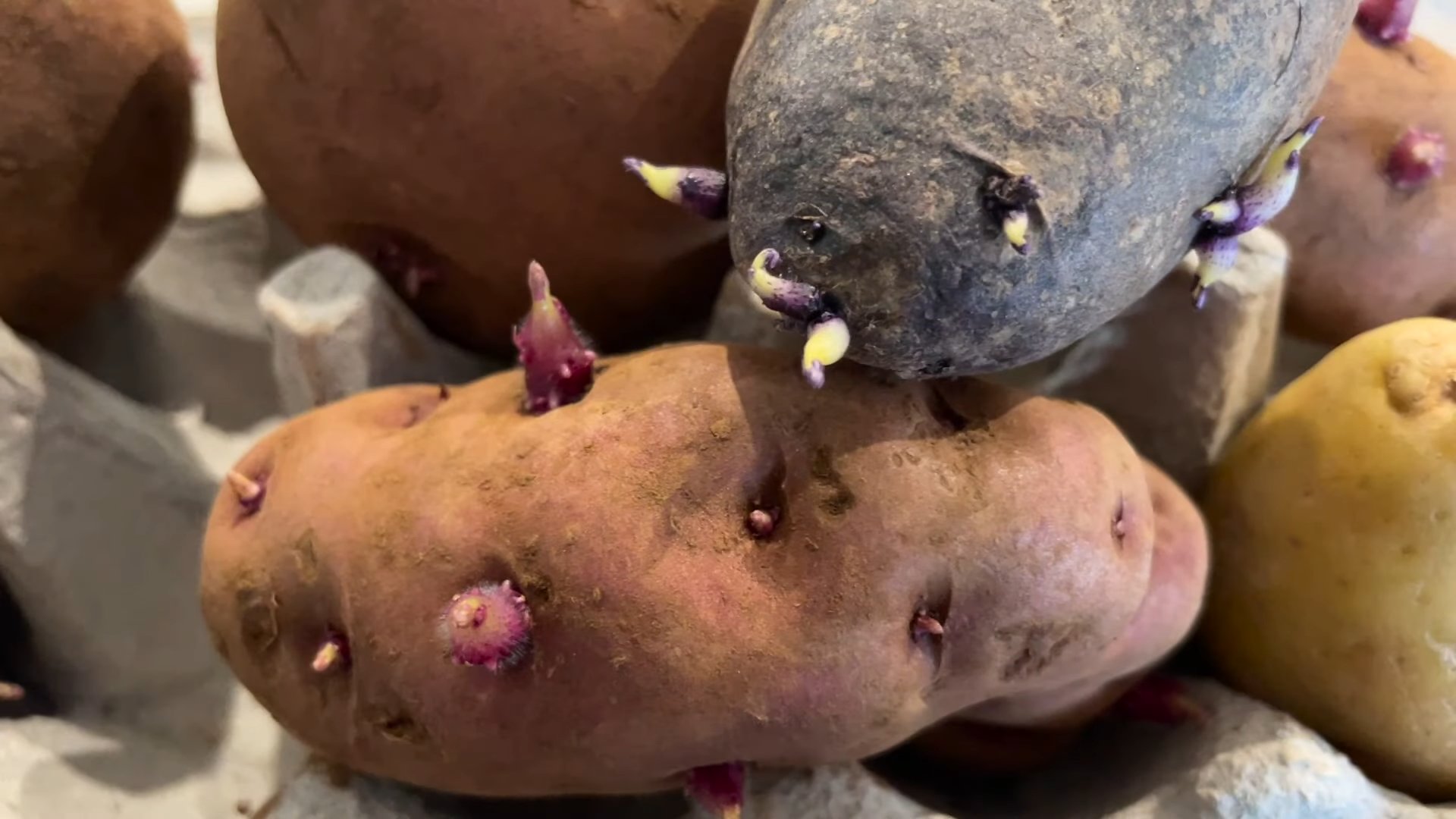
Conclusion
So, there you have it! Growing potatoes in containers is not just a gardening trend; it’s a game-changer for anyone, regardless of space or experience. We’ve walked through the simple steps, highlighted the benefits, and hopefully, inspired you to ditch the store-bought spuds and embrace the satisfaction of harvesting your own homegrown goodness.
Why is this DIY potato growing trick a must-try? Because it puts you in control. You control the soil, the watering, and the overall environment, leading to healthier, more flavorful potatoes. Imagine the taste of freshly dug, organically grown potatoes, bursting with earthy sweetness. It’s a culinary experience you simply can’t replicate with store-bought varieties. Plus, it’s incredibly rewarding to watch those little seed potatoes transform into a bountiful harvest.
But the best part? The flexibility! Container gardening opens up a world of possibilities. Don’t have a sprawling backyard? No problem! A sunny balcony, patio, or even a well-lit deck will do. This method is perfect for apartment dwellers, urban gardeners, or anyone looking to maximize their growing space.
Ready to take your potato growing to the next level? Consider these variations:
* Experiment with different potato varieties: From Yukon Golds to Red Norlands to fingerling potatoes, each variety offers a unique flavor and texture. Try a few different types to discover your favorites.
* Companion planting: Enhance your potato growth by planting companion plants like marigolds (to deter pests) or basil (to improve flavor).
* Vertical gardening: Get creative with stacked containers or potato towers to maximize space and create a visually stunning display.
* Fertilizer adjustments: Tailor your fertilizer schedule to the specific needs of your potato variety. Some varieties may require more phosphorus for tuber development.
We’re confident that once you experience the joy of harvesting your own container-grown potatoes, you’ll be hooked. It’s a simple, rewarding, and delicious way to connect with nature and enjoy the fruits (or rather, vegetables) of your labor.
So, grab your seed potatoes, gather your containers, and get ready to embark on a potato-growing adventure! We encourage you to try this DIY trick and share your experiences with us. Let us know what varieties you’re growing, what challenges you’ve faced, and what successes you’ve celebrated. Share your photos, tips, and tricks in the comments below. Let’s build a community of container potato growers and inspire others to join the fun! Happy growing!
Frequently Asked Questions (FAQs)
What kind of container is best for growing potatoes?
The ideal container for growing potatoes should be large enough to accommodate the growing root system and allow for hilling. A container that is at least 20 inches in diameter and 20 inches deep is generally recommended. You can use plastic pots, grow bags, wooden crates, or even repurposed containers like old trash cans (with drainage holes, of course!). The key is to ensure adequate drainage to prevent waterlogging, which can lead to rot. Dark-colored containers can warm the soil faster, which can be beneficial in cooler climates, but be mindful of overheating in hot climates.
What type of soil should I use for growing potatoes in containers?
Potatoes thrive in well-draining, slightly acidic soil. A good potting mix specifically formulated for vegetables is an excellent choice. Avoid using garden soil, as it can be too heavy and compact, hindering drainage and root development. You can also create your own potting mix by combining equal parts of peat moss (or coconut coir), perlite, and compost. The compost will provide essential nutrients, while the peat moss or coconut coir will retain moisture, and the perlite will improve drainage.
How often should I water my container potatoes?
Watering frequency depends on several factors, including the size of the container, the weather conditions, and the type of soil you’re using. Generally, you should water your potatoes when the top inch of soil feels dry to the touch. Avoid overwatering, as this can lead to root rot. During hot, dry periods, you may need to water daily. Ensure that the water drains freely from the bottom of the container. A good rule of thumb is to water deeply and less frequently, rather than shallowly and more often.
How much sunlight do potatoes need when grown in containers?
Potatoes need at least six to eight hours of direct sunlight per day to thrive. Choose a location that receives ample sunlight throughout the day. If you live in a particularly hot climate, some afternoon shade may be beneficial to prevent the plants from overheating. If you don’t have access to a sunny spot, you can supplement with grow lights.
When and how should I “hill” my potato plants in containers?
Hilling is the process of adding more soil to the container as the potato plants grow. This encourages the plants to produce more potatoes along the buried stem. Start hilling when the plants are about 6 inches tall. Add a few inches of soil around the base of the plants, leaving the top leaves exposed. Repeat this process every few weeks as the plants grow, until the container is nearly full.
What kind of fertilizer should I use for container potatoes?
Potatoes are heavy feeders and benefit from regular fertilization. Use a balanced fertilizer with an NPK ratio of 10-10-10 or 14-14-14. You can also use a fertilizer specifically formulated for potatoes or vegetables. Apply the fertilizer according to the package directions. Avoid over-fertilizing, as this can lead to excessive foliage growth at the expense of tuber development. You can also supplement with organic fertilizers like compost tea or fish emulsion.
How do I know when my potatoes are ready to harvest?
The timing of harvest depends on the potato variety and your personal preference. Generally, potatoes are ready to harvest when the plants begin to flower or when the foliage starts to turn yellow and die back. You can harvest “new potatoes” (small, tender potatoes) a few weeks after flowering. For larger, more mature potatoes, wait until the foliage has completely died back. To harvest, gently tip the container over and carefully remove the potatoes from the soil.
What are some common pests and diseases that affect container potatoes, and how can I prevent them?
Common pests that can affect container potatoes include aphids, potato beetles, and flea beetles. Diseases include early blight, late blight, and potato scab. To prevent pests and diseases, choose disease-resistant potato varieties, practice good sanitation (remove dead leaves and debris), and monitor your plants regularly for signs of infestation or disease. You can use organic pest control methods like insecticidal soap or neem oil to control pests. Ensure good air circulation around the plants to prevent fungal diseases.
Can I reuse the soil from my potato containers for other plants?
Yes, you can reuse the soil from your potato containers, but it’s important to amend it before planting other crops. Potatoes can deplete the soil of nutrients, so you’ll need to replenish them by adding compost, aged manure, or other organic matter. You should also test the soil pH to ensure it’s suitable for the plants you intend to grow. Avoid reusing soil that has been infected with pests or diseases.
How do I store my harvested potatoes?
Store your harvested potatoes in a cool, dark, and well-ventilated place. The ideal temperature is between 45 and 50 degrees Fahrenheit. Avoid storing potatoes in the refrigerator, as this can cause them to convert starch to sugar, resulting in a sweet taste. Store potatoes away from apples and bananas, as these fruits release ethylene gas, which can cause potatoes to sprout. Properly stored potatoes can last for several months.

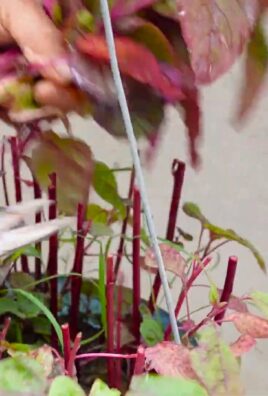
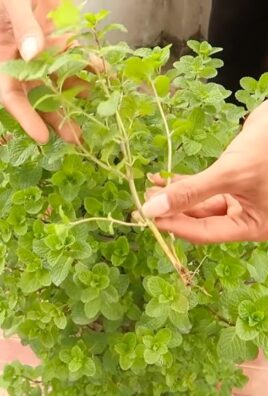
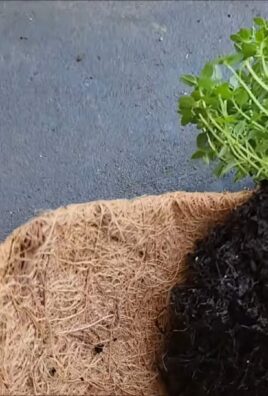
Leave a Comment